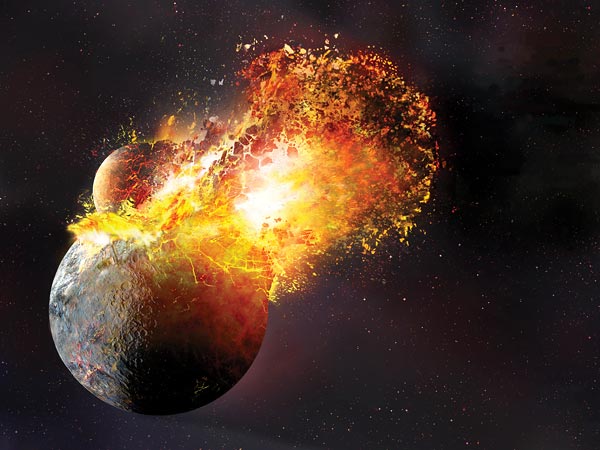A research team out of UCLA, when testing the compositions of moon rocks, determined that they possessed a striking similarity to rocks found here on Earth. This has led the scientists to believe that the Earth and the moon have the same origin.
McGill Earth and Planetary Sciences professor William Minarik, who has taught and published on the origin of the moon, is well acquainted with the varying theories popular throughout history.
“[The Co-Accretion Theory] was the idea that the Earth-moon system formed together, just like the sun and the planets formed together from the same nebula,” Minarik explained. “Another theory was the Capture Theory: The moon formed somewhere else, and then just because of orbital dynamics managed to somehow get captured by the Earth.”
But since the Apollo missions, the dominant theory has been what is dubbed the Giant Impact Theory, or the Big Splash. The Earth-moon system was formed when some planetary body—called Theia, after a titaness of Greek mythology—collided with a proto-Earth, and the molten debris fell into orbit to become our moon.
This theory is nothing new, but the UCLA team’s results give it a new spin: For decades, the prevalent model was a a small, Mars-sized Theia hitting the proto-Earth off-centre. Using computer modelling programs adapted from military code used in nuclear weapons testing, this was the scenario that best accounted for the orbital dynamics we see in the Earth-moon system, including angular momentum and the moon’s lack of an iron core. However, the model resulted in a moon made up mostly of the remains of Theia and an Earth made up mostly of Earth.
This conception was strengthened by the findings of a German team two years ago that used similar techniques to determine moon rocks and Earth rocks had different isotopic ratios. Because the teams used similar methods and both findings were statistically significant, scientists can not yet fully account for the discrepancy. Only one moon rock was tested by both groups, and the measurements on that one sample agree to within the experiments’ margins of error.
Before the present results, the idea that Theia hit the proto-Earth off-centre was still feasible. The precision and accuracy of the measurements done by the researchers at UCLA are so good, however, that the group is confident the only explanation can be very thorough mixing in the impact.
The new findings cast this theory (a blob of Mars-sized Theia spinning off to become the moon) into doubt. What now seems likelier is a young proto-Earth that was only 80 per cent as big as the current Earth taking a head-on collision with a Theia of about the same size. This also means that the blob of molten planet that escaped from the crash wasn’t mostly Theia at all—the collision thoroughly mixed the two masses to the extent that both the moon and Earth, afterwards, were about half proto-Earth and half Theia. Essentially, the moon and Earth are made of the same stuff.
To come to this conclusion, the group measured levels of rare oxygen isotopes in the samples. The isotope levels are measured using a mass spectrometer, which accelerates particles down a long tube before bending their paths with a magnet. Lighter particles, like ones with fewer neutrons, bend more, and so end up in a different spot on the detector.
“The mass spectrometers are just getting better,” Minarik stated. “They’re getting bigger, the magnets are getting more precise, the flight paths are longer, the electronics are lower noise.”
And, luckily for the researchers, their forebears had the foresight to predict this.
“The Apollo samples—and this is one of the benefits to long-term funding—when Apollo brought back our samples, they were split in half,” Minarik said. “Half of each sample was put into storage and never touched, and the other half was sent out to be studied. So now, as instrumentation gets better, as the techniques get more precise, we still have pristine samples still in our repository that have never been touched: They’ve never seen Earth atmosphere, they’ve never been messed with.”









